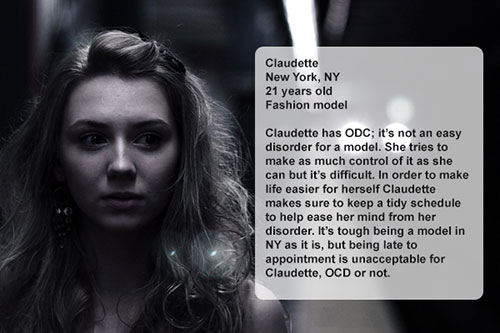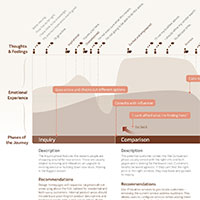What is the Point of Personas?
Did you know that personas predate user experience and usability? They were a concept first derived by Alan Cooper in his book The Inmates are Running the Asylum. However, it was Angus Jenkinson, a marketing director, who developed the concept for usability purposes.
Then, Cooper developed it even further with software in mind where he encouraged personas to be as specific as possible. And that’s brief history of how personas came to be.
Personas today
Today, they are used in a verity of ways for usability and user experience purposes where they help shape products as they are being developed.
Personas are not mythical creatures; they are made up people that would be your customers based on your target audience research. They will have to represent someone who is going to be using your product where as all the details about them should be very factual, not fictional. They should be archetypical users with legitimate goals and personalized by traits of your target audience. If they are not factual than the purpose is defeated.
What is the point of personas?
Simply put, they help you get a better understanding of your customers. Whatever product you are developing or embellishing, you wouldn’t lose track of your user’s needs and goals. In short, they give you insight. Personas allow you to explore a wide range of questions such as ‘what makes your company brand relevant to its customers?’ or ‘what factors influence purchase behaviors?’ By creating personas you know the answers to these questions.
What makes up personas?
Don’t hate me for saying this, but what to include in them will depend on your project. Some basic things you should always consider though include name, age, technical abilities – how tech savvy are they – their likes and dislikes, and personalities. If you’re really anal you can include their occupation, hobbies or lifestyles.
Include the information that helps you better understand your users. If the fact that persona A is a nurse and persona B is a pilot helps you, include it. If it matters not, don’t bother.
How many to make?
The amount of personas depends on the size and the various user types your project will be facing; the more variation in your users, the bigger the project and the more personas you should have. When creating them, try to group those parameters which are important for your business. Normally, about 5 or more personas should do the trick. Of course don’t go over board by making hundreds of them as it will simply be too tedious to keep track of. It will be a waste of your effort, as you will end up paying attention to only some of those.
Personas and mental models
As I’ve been saying throughout this article, personas are all about getting in the heads of your users. They are an excellent tool for you to get familiar with the various mental models of your users. What’s a mental model? It’s the thought and thought process of an individual. They vary person by person because not everyone thinks the same.
A great and well-used example of this is how various people like to take notes. A teenager might do so on her smartphone via a note-taking app. A journalist might take out a recording device while an elderly man might take notes with a pencil and paper. It all depends on people’s backgrounds – where they are coming from – and where they currently are. By understanding the mental models you can anticipate specific interactions based on the knowledge your users might have or lack.
Some examples
Search the web and you will find plenty of examples. A notable collection of personas is Flickr collection by Jason Travis. Instead of taking a typical text passed personas he took it to a next level and took pictures of items that describe the person. This is a much more personable way to depict personas as pictures are more powerful than text. The reason I am sharing this with you is to show you that this doesn’t have to be dull, tedious or boring. You’re a creative person; use that to your advantage! Below are few examples of his work.

A Persona created by Jason Travis.

A Persona created by Jason Travis.

A Persona created by Jason Travis.
If you are looking for something a little bit more traditional here a couple examples. They are short, and brief because that is what my project needed. If my project called for more in depth analysis of our users, the personas would have been much more extensive.

Persona Alma

Persona Claudette
Conclusion
So there you have it, a quick overview as to what use do personas provide. They are a really great tool because they don’t cost any money, only your effort into researching your audience, which you should be doing anyway. They’re such an informative tool too. They provide valuable insight into your audience’s minds. If you keep your personas in mind while developing your project you will make a better product that is better fit for your target users.






No responses yet to “What is the Point of Personas?”